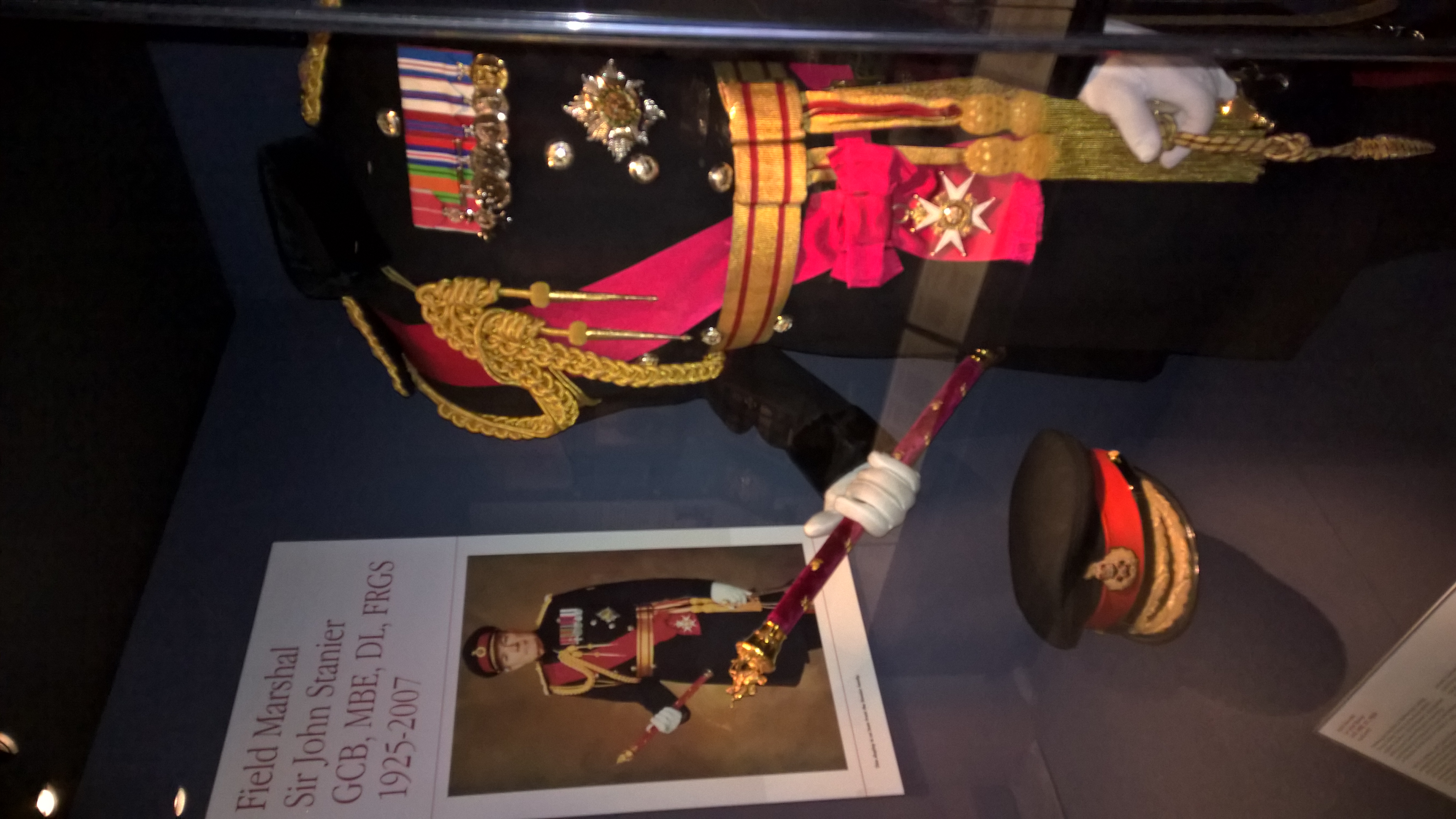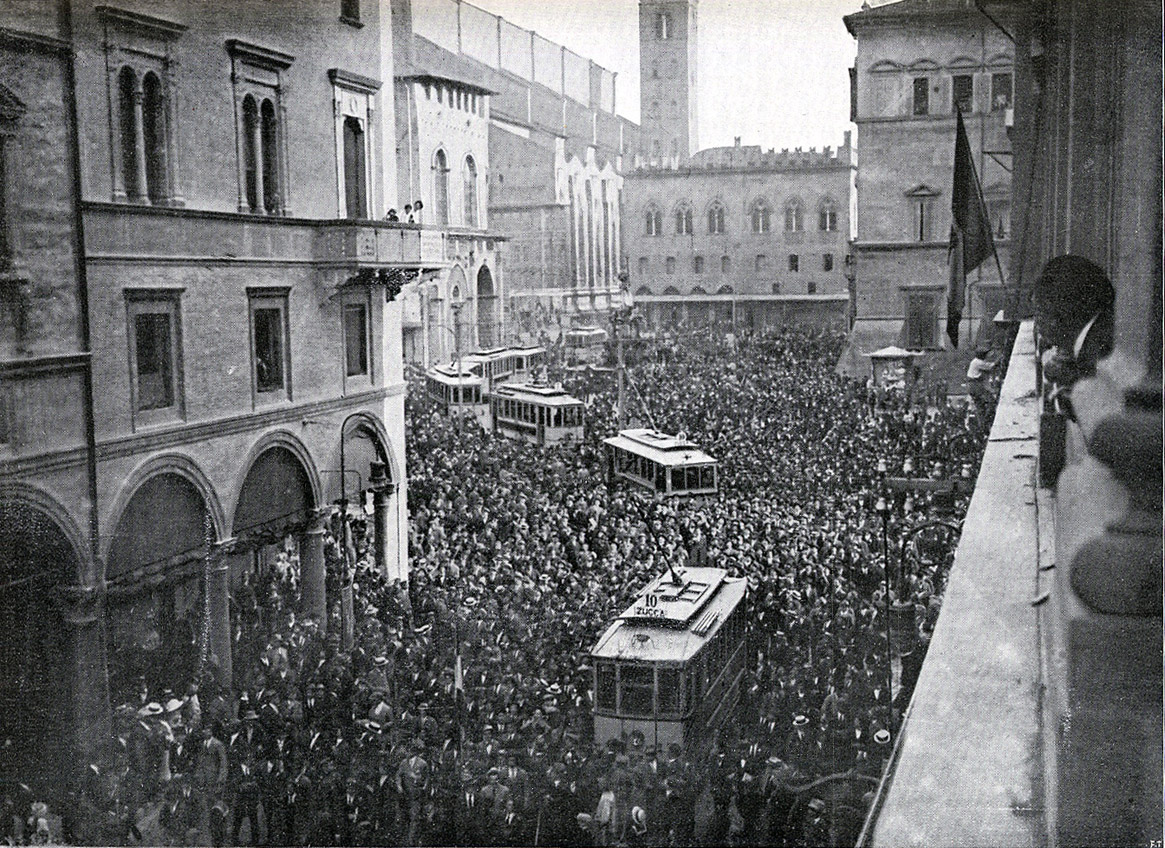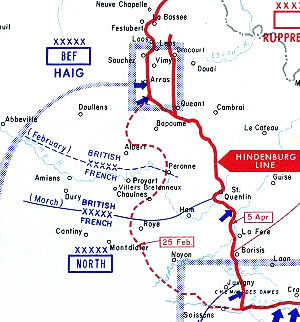|
Battle Of Poelcappelle
The Battle of Poelcappelle was fought in Flanders, Belgium, on 9 October 1917 by the British Second Army and Fifth Army against the German 4th Army, during the First World War. The battle marked the end of the string of highly successful British attacks in late September and early October, during the Third Battle of Ypres. Only the supporting attack in the north achieved a substantial advance. On the main front, the German defences withstood the limited amount of artillery fire achieved by the British after the attack of 4 October. The ground along the main ridges had been severely damaged by shelling and rapidly deteriorated in the rains, which began again on 3 October, turning some areas back into swamps. Dreadful ground conditions had more effect on the British, who needed to move large amounts of artillery and ammunition to support the next attack. The battle was a defensive success for the 4th Army, although costly to both sides. The weather and ground conditions put sever ... [...More Info...] [...Related Items...] OR: [Wikipedia] [Google] [Baidu] |
Battle Of Passchendaele
The Third Battle of Ypres (german: link=no, Dritte Flandernschlacht; french: link=no, Troisième Bataille des Flandres; nl, Derde Slag om Ieper), also known as the Battle of Passchendaele (), was a campaign of the First World War, fought by the Allies against the German Empire. The battle took place on the Western Front, from July to November 1917, for control of the ridges south and east of the Belgian city of Ypres in West Flanders, as part of a strategy decided by the Allies at conferences in November 1916 and May 1917. Passchendaele lies on the last ridge east of Ypres, from Roulers (now Roeselare), a junction of the Bruges-(Brugge)-to-Kortrijk railway. The station at Roulers was on the main supply route of the German 4th Army. Once Passchendaele Ridge had been captured, the Allied advance was to continue to a line from Thourout (now Torhout) to Couckelaere ( Koekelare). Further operations and a British supporting attack along the Belgian coast from Nieuport ( Nieuw ... [...More Info...] [...Related Items...] OR: [Wikipedia] [Google] [Baidu] |
Third Army (United Kingdom)
The Third Army was a field army of the British Army during World War I that saw active service on the Western Front throughout the war. First World War The Third Army was part of the British Army during World War I and was formed in France on 13 July 1915, under the command of Lieutenant-General Charles Monro. During August 1915 the Third Army took over trench line south of the French Tenth Army, which had to keep in position for the forthcoming autumn offensive. This made the Third Army geographically separate from the other British Armies for the time being. This remained the case until March 1916, when the French Tenth Army was redeployed because of French losses at Verdun and the British Fourth Army was formed in preparation for the Battle of the Somme. The battles it took part in on the Western Front included: * Battle of the Somme * Battle of Cambrai * Second Battle of Arras (April 1917) * Battle of Passchendaele * Battle of Amiens (August 1918) * Hundred Days Offen ... [...More Info...] [...Related Items...] OR: [Wikipedia] [Google] [Baidu] |
General (United Kingdom)
General (or full general to distinguish it from the lower general officer ranks) is the highest rank achievable by serving officers of the British Army. The rank can also be held by Royal Marines officers in tri-service posts, for example, General Sir Gordon Messenger the former Vice-Chief of the Defence Staff. It ranks above lieutenant-general and, in the Army, is subordinate to the rank of field marshal, which is now only awarded as an honorary rank. The rank of general has a NATO-code of OF-9, and is a four-star rank. It is equivalent to a full admiral in the Royal Navy or an air chief marshal in the Royal Air Force. Officers holding the ranks of lieutenant-general and major-general may be generically considered to be generals. Insignia A general's insignia is a crossed sword and baton. This appeared on its own for the now obsolete rank of brigadier-general. A major-general has a pip over this emblem; a lieutenant-general a crown instead of a pip; and a full ge ... [...More Info...] [...Related Items...] OR: [Wikipedia] [Google] [Baidu] |
Ypres Area, Autumn, 1917
Ypres ( , ; nl, Ieper ; vls, Yper; german: Ypern ) is a Belgian city and municipality in the province of West Flanders. Though the Dutch name is the official one, the city's French name is most commonly used in English. The municipality comprises the city of Ypres/Ieper and the villages of Boezinge, Brielen, Dikkebus, Elverdinge, Hollebeke, Sint-Jan, Vlamertinge, Voormezele, Zillebeke, and Zuidschote. Together, they are home to about 34,900 inhabitants. During the First World War, Ypres (or "Wipers" as it was commonly known by the British troops) was the centre of the Battles of Ypres between German and Allied forces. History Origins before First World War Ypres is an ancient town, known to have been raided by the Romans in the first century BC. It is first mentioned by name in 1066 and is probably named after the river Ieperlee on the banks of which it was founded. During the Middle Ages, Ypres was a prosperous Flemish city with a population of 40,000 in 1200 AD, renow ... [...More Info...] [...Related Items...] OR: [Wikipedia] [Google] [Baidu] |
British Expeditionary Force (World War I)
The British Expeditionary Force (BEF) was the six-divisions the British Army sent to the Western Front during the First World War. Planning for a British Expeditionary Force began with the 1906–1912 Haldane reforms of the British Army carried out by the Secretary of State for War Richard Haldane following the Second Boer War (1899–1902). The term ''British Expeditionary Force'' is often used to refer only to the forces present in France prior to the end of the First Battle of Ypres on 22 November 1914. By the end of 1914—after the battles of Mons, Le Cateau, the Aisne and Ypres—the existent BEF had been almost exhausted, although it helped stop the German advance.Chandler (2003), p. 211 An alternative endpoint of the BEF was 26 December 1914, when it was divided into the First and Second Armies (a Third, Fourth and Fifth being created later in the war). "British Expeditionary Force" remained the official name of the British armies in France and Flanders throug ... [...More Info...] [...Related Items...] OR: [Wikipedia] [Google] [Baidu] |
Douglas Haig, 1st Earl Haig
Field Marshal Douglas Haig, 1st Earl Haig, (; 19 June 1861 – 29 January 1928) was a senior officer of the British Army. During the First World War, he commanded the British Expeditionary Force (BEF) on the Western Front from late 1915 until the end of the war. He was commander during the Battle of the Somme, the Battle of Arras, the Third Battle of Ypres, the German Spring Offensive, and the Hundred Days Offensive.Sheffield 2002, p. 21.Sheffield 2002, p. 263.Hart 2008, p. 2. His military career included service in the War Office, where he was instrumental in the creation of the Territorial Force in 1908. In January 1917 he was raised up to the rank of Field Marshal, subsequently leading the BEF during the final Hundred Days Offensive, when it crossed the Canal du Nord and broke through the Hindenburg line, capturing 195,000 German prisoners. This campaign, in combination with the Kiel mutiny, the Wilhelmshaven mutiny, the proclamation of a republic on 9 November 1918 ... [...More Info...] [...Related Items...] OR: [Wikipedia] [Google] [Baidu] |
Field Marshal (United Kingdom)
Field Marshal (FM) has been the highest rank in the British Army since 1736. A five-star rank with NATO code OF-10, it is equivalent to an Admiral of the Fleet in the Royal Navy or a Marshal of the Royal Air Force in the Royal Air Force (RAF). A Field Marshal's insignia consists of two crossed batons surrounded by yellow leaves below St Edward's Crown. Like Marshals of the RAF and Admirals of the Fleet, Field Marshals traditionally remain officers for life, though on half-pay when not in an appointment. The rank has been used sporadically throughout its history and was vacant during parts of the 18th and 19th centuries (when all former holders of the rank were deceased). After the Second World War, it became standard practice to appoint the Chief of the Imperial General Staff (later renamed Chief of the General Staff) to the rank on his last day in the post. Army officers occupying the post of Chief of the Defence Staff, the professional head of all the British Armed For ... [...More Info...] [...Related Items...] OR: [Wikipedia] [Google] [Baidu] |
Battle Of Broodseinde
The Battle of Broodseinde was fought on 4 October 1917 near Ypres in Belgium, at the east end of the Gheluvelt plateau, by the British Second and Fifth armies against the German 4th Army. The battle was the most successful Allied attack of the Third Battle of Ypres. Using ''bite-and-hold'' tactics, with objectives limited to what could be held against German counter-attacks, the British devastated the German defence, which prompted a crisis among the German commanders and caused a severe loss of morale in the 4th Army. Preparations were made by the Germans for local withdrawals and planning began for a greater withdrawal, which would entail the abandonment by the Germans of the Belgian coast, one of the strategic aims of the Flanders offensive. After the period of unsettled but drier weather in September, heavy rain began again on 4 October and affected the remainder of the campaign, working more to the advantage of the German defenders, being pushed back on to far less dam ... [...More Info...] [...Related Items...] OR: [Wikipedia] [Google] [Baidu] |
Italian Front (World War I)
The Italian front or Alpine front ( it, Fronte alpino, "Alpine front"; in german: Gebirgskrieg, "Mountain war") involved a series of battles at the border between Austria-Hungary and Italy, fought between 1915 and 1918 in the course of World War I. Following secret promises made by the Allies in the 1915 Treaty of London, Italy entered the war aiming to annex the Austrian Littoral, northern Dalmatia, and the territories of present-day Trentino and South Tyrol. Although Italy had hoped to gain the territories with a surprise offensive, the front soon bogged down into trench warfare, similar to that on the Western Front in France, but at high altitudes and with very cold winters. Fighting along the front displaced much of the local population, and several thousand civilians died from malnutrition and illness in Italian and Austro-Hungarian refugee-camps. The Allied victory at Vittorio Veneto, the disintegration of the Habsburg empire, and the Italian capture of Trento and ... [...More Info...] [...Related Items...] OR: [Wikipedia] [Google] [Baidu] |
Eastern Front (World War I)
The Eastern Front or Eastern Theater of World War I (german: Ostfront; ro, Frontul de răsărit; russian: Восточный фронт, Vostochny front) was a theater of operations that encompassed at its greatest extent the entire frontier between Russia and Romania on one side and Austria-Hungary, Bulgaria, the Ottoman Empire, and Germany on the other. It stretched from the Baltic Sea in the north to the Black Sea in the south, involved most of Eastern Europe, and stretched deep into Central Europe as well. The term contrasts with "Western Front", which was being fought in Belgium and France. During 1910, Russian General Yuri Danilov developed "Plan 19" under which four armies would invade East Prussia. This plan was criticised as Austria-Hungary could be a greater threat than the German Empire. So instead of four armies invading East Prussia, the Russians planned to send two armies to East Prussia, and two armies to defend against Austro-Hungarian forces invading from Gal ... [...More Info...] [...Related Items...] OR: [Wikipedia] [Google] [Baidu] |
Battle Of La Malmaison
The Battle of La Malmaison () from 23 to 27 October, was the final French action of the 1917 campaign in the First World War, which had begun with the Nivelle Offensive. The French captured the village and fort of La Malmaison and took control of the Chemin des Dames ridge. The German 7th Army (General Max von Boehn) had discovered French preparations for the attack and also identified the date and time. Boehn chose to defend the front positions, rather than treat them as an advanced zone and to conduct the main defence north of the Oise–Aisne Canal. The German artillery was outnumbered three-to-one and on the front of the 14th Division, batteries were confronted by which silenced most of the German guns before the attack. Gas from French bombardments on low-lying land near the Oise–Aisne Canal in the Ailette valley, became so dense that it was impossible to carry ammunition and supplies forward or to remove the wounded. Battalions from specialist German counter-att ... [...More Info...] [...Related Items...] OR: [Wikipedia] [Google] [Baidu] |



.jpg)




